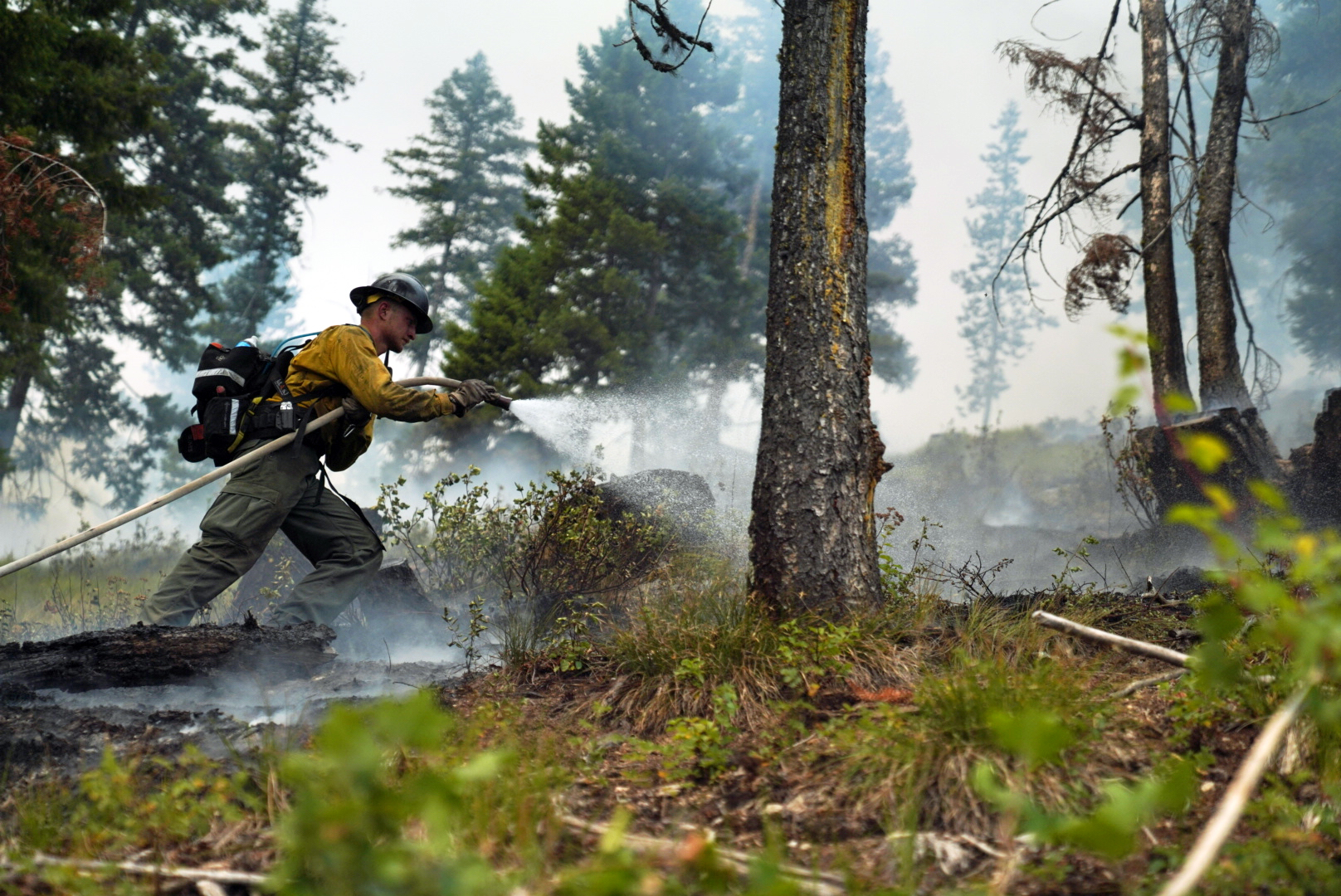
When U.S. Forest Service firefighters aren't actively fighting fires in the Pacific Northwest, they're often dispatched elsewhere to help. In this file photo from 2021, a firefighter sprays a hot spot with water on the Granite Pass Complex in Montana.
Michael Gue, courtesy of the U.S. Forest Service
As wildfires in Canada continue to rage, the U.S. Forest Service, along with other state and federal agencies, has dispatched nearly 500 firefighters to combat the flames.
As wildfire smoke billows across the Midwest and Northeast U.S., concerns over firefighter pay, mental health and longer firefighting seasons have been brought to the forefront, said Alex Robertson, the Forest Service director of fire, fuels and aviation for the Pacific Northwest and Alaska.
“All of those things are on everybody’s radar screen right now,” he said. “So, that smoke impacting a part of the nation that doesn’t normally see smoke certainly draws attention to some of the issues that we’ve been talking about for a long time.”
Robertson added that staffing for manager-level firefighting positions is currently sufficient, but a lack of housing and a shrinking applicant pool has made filling some entry level positions more challenging.

FILE: Eldorado Hotshots complete firing activities on the Delta Fire in California on Sept. 12, 2018.
Grant Coor, courtesy of the U.S. Forest Service
“The national forest system was built on national forest and ranger districts and a lot of those ranger districts are in some pretty remote places without a lot of services,” he said. “There used to be a lure to the Forest Service to go live in some of those places. And the folks that we’re hiring into our entry level positions, it’s not as desirable as maybe what it used to be.”
Meanwhile, the first fires of the season have sparked in Eastern Oregon. On Tuesday, Gov. Tina Kotek declared an emergency to mobilize additional help to battle wildfires in Umatilla County, one of which is now 100% contained, according to the Oregon State Fire Marshal.
Robertson spoke to “Think Out Loud” host Dave Miller about fire season. Click play to listen to the full conversation:



